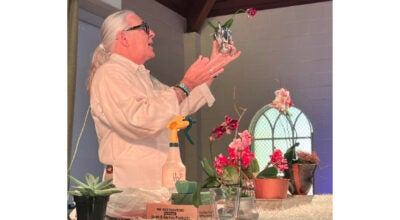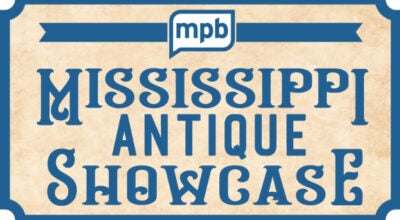Three bites in three months, but fewer snakes?
Published 12:02 am Tuesday, September 27, 2011
NATCHEZ — The experts say there are fewer snakes on the move in the Miss-Lou this year, but don’t tell that to Dr. Frank Guedon.
Guedon, a local ob-gyn, was bitten three weeks ago by a 16-inch water moccasin while reaching for dog food underneath the carport at his house.
“I went down to scoop up the food and felt the teeth sink in,” Guedon said. “When I yanked back, the snake was stuck on my hand.”
The snake fell off as he raised his hand upward, but the damage was done. The snake bit Guedon just below his middle two fingers on the palm of his right hand.
Guedon killed the snake with a broom and took it with him to the emergency room at Natchez Regional Medical Center.
Guedon said within two hours of the strike, the swelling had spread halfway up his arm. He said the hospital staff then decided to use six vials of antivenom.
“My hand was swollen so bad that I couldn’t touch my (forefinger with my thumb).”
Guedon, who was bitten at approximately 8 p.m., left the emergency room at 2 a.m. He said he felt nauseated from the antivenom the next morning, but has fully recovered and is back at work delivering babies.
Guedon isn’t the only local resident on the mend from snake venom though.
Dr. Elizabeth James, the emergency department director at NRMC, said the hospital has treated three snakebite victims in the past three months.
James said she believes one of the bites was from a rattlesnake and another from a water moccasin. She said she was not sure what type of snake bit the third victim.

Dr. Frank Guedon holds up a jar with a dead water moccasin that bit him on the hand while feeding his dogs in his carport. The bite caused his hand to swell to the point that he could not touch his thumb with his forefinger.
Yet, experts at St. Catherine Creek Wildlife Refuge and statistics from the Natchez Police Department indicate fewer snake sightings this year.
Natchez Police Department Capt. Tom McGehee said NPD has had nine calls for service for snakes — none of which were bites — since May 1, that’s down from the 12 calls last summer.
Lisa Freeman, the Natchez Animal Control officer, said she has not had any calls regarding snakes.
Bob Strader, manager at the St. Catherine Creek Wildlife Refuge, said he has seen fewer snakes at the refuge this summer.
Strader said it might appear that there are more snakes around because snakes are more active at this time of year as they begin to store fat in preparation for hibernation.
Kent Ozment, assistant manager at the refuge, said it is possible the flooding this summer pushed snakes out of their homes and concentrated them and other animals all together at a higher elevation. He said this could have resulted in more snakes being preyed upon, which might account for fewer snake sightings throughout the summer.
Ozment said it is also possible that the snakes did not return to their homes after the flooding.
“If the water pushed them high enough, they might not have returned to their original site,” he said. “But that would be their instinct, to return to their home.”
Locals who spend their summers outside are reporting fewer sightings as well.
Stan Smith, who bikes on the Natchez Trace three to five times a week, said he has seen fewer snakes overall this summer.
But Smith said he did encounter a rattlesnake on the Natchez Trace a couple of weeks ago.
“Rattlesnakes usually don’t get excited,” he said. “I just got my wheel close to him and he eased away. He didn’t act aggressive or start rattling.”
Smith said he generally sees more copperheads on the Trace than rattlesnakes. He said, in his experience, copperheads immediately coil up and do not move.
“You can’t run them off the road,” Smith said.
Smith said he typically tries to get the snakes off the Trace so they are not run over by cars and are not a danger to walkers or cyclists.
Guedon said he has caught king snakes since he was a boy and has always been respectful of venomous snakes.
“I have never been scared of snakes, and I’m not now,” he said. “I am just a lot more leery of them.”
Leery is a good thing, Dr. James said. Avoiding trouble is best, but if bitten, James advised seeking immediate medical attention.
James said bite victims should remove any jewelry or constraining items near the bite, such as rings or watches, and keep whatever extremity has been bitten below the heart.
No tourniquets, venom-sucking or lancing should be done to the bite, said James and Ozment.
“If you do the tourniquet, it will localize the venom to an extremity, and it will be more likely that you will lose the extremity than if you had let the venom flow throughout the body,” Ozment said.
She said a person should not attempt to kill or catch the snake that bit them.
“A lot of times people get bitten again trying to do that,” she said. “If you can take a picture of the snake from a safe distance, that is fine.”
James said doctors can typically tell if a snake is venomous by the reaction a bite victim has.
James said hospitals work in conjunction with poison control to treat bites.
She said Natchez Regional and Natchez Community Hospital share antivenom and have a variety to treat bites.
James said a snakebite patient is usually admitted for a 24-hour observation period.






